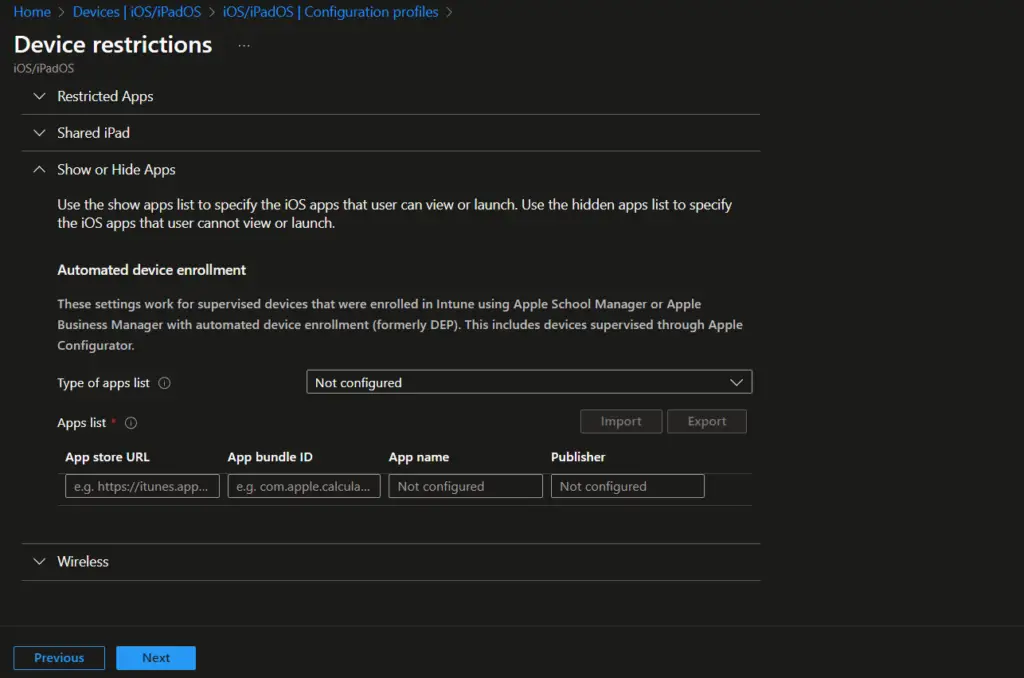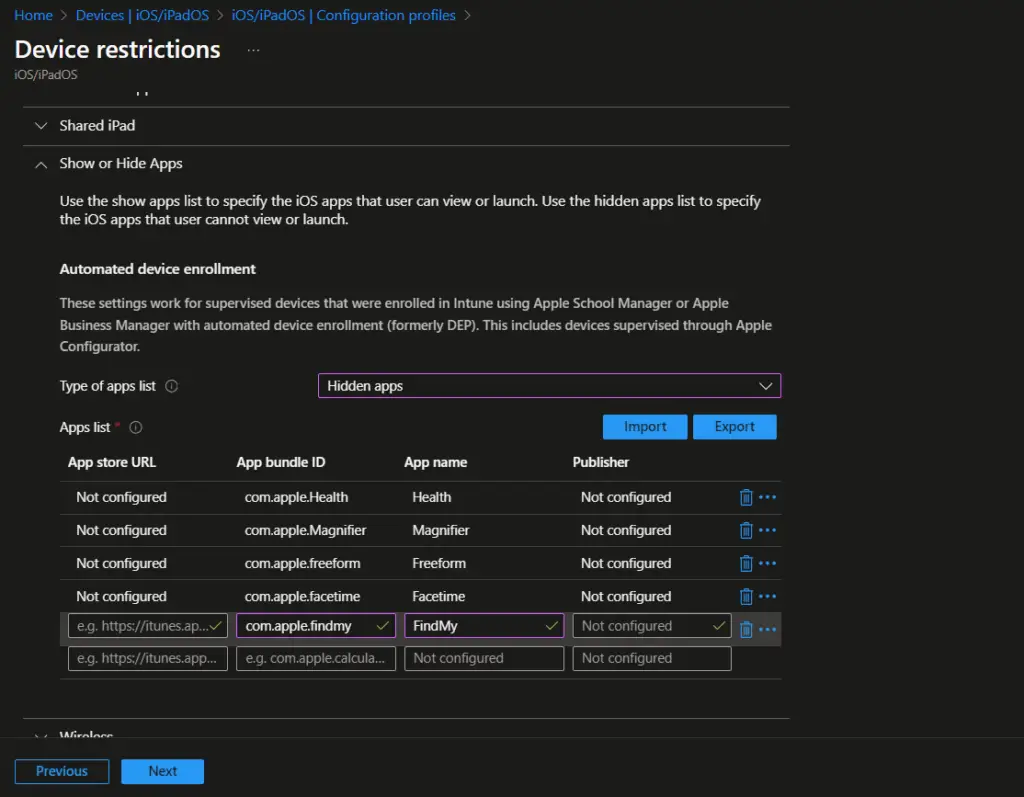Microsoft Intune includes some built-in settings to configure different Apple features on iOS/iPadOS devices. One of such setting is to show or hide built-in (native) apps. You can configure the policy for visible or hidden apps through Intune device restriction profiles.
This feature applies to below iOS/iPadOS versions.
- iOS 9.3 and newer
- iPadOS 13.0 and newer
These settings are available for Automated Device Enrollment (Supervised) devices.
How to Show or Hide Built-In iOS Apps
Follow the below steps to create an Intune device restrictions profile to show or hide iOS native apps on iPhones and iPads. Apple prevents hiding a few default apps such as the Settings app cannot be hide.
- On the Intune admin center, navigate to Devices > iOS/iPadOS > Configuration Profiles
- Click on Create and select New Policy.
- On the Create a Profile window, select Template under Profile type, select Device restrictions template, and click on Create.
- Provide Policy Name and Description on Basic page.
- Click on Next to go to Configuration Settings page. Expand Show or Hide Apps.

- Click on Type of app list combo box, and select Hidden apps as we are demonstrating to hide apps in this tutorial. If you want to show the apps then you can select “Visible apps“.
- Hidden Apps – The apps added in Apps list are hidden from the user. The users can’t see or launch these apps.
- Visible Apps – The apps added to the Apps list are visible to the user. The users can only see and launch these applications. Users won’t be able to see or launch other apps.
- On the Apps list, add the App bundle ID and App Name for all the apps that you want to hide from the home screen. You can find Bundle IDs for native iPhone and iPad apps on Apple support page. Bundle IDs are case-sensitive.

- Once you added all iOS apps that you want to hide, click on Next to go through Assignment, Scope tags, and Review + create to complete device restriction policy creation process.
End User Experience
In the below iPad home screen, you can see the native built-in applications such as Facetime, FindMy, and Freeform. The screenshot was taken before the policy to hide the native app was applied.
You may have noticed that a few M365 Apps appear first on the home screen. Then native apps appear in alphabetical order.. This behavior is due to the policy applied to configure iOS home screen layout. You can check out Configure Home Screen Layout on iOS using Intune to learn more about configuring home screen layout on iPad / iPhone devices through Intune.

The below screenshot was taken after applying the policy to hide built-in apps. We have configured the policy to hide a few native apps (Health, Magnifier, Freeform, Facetime, and FindMy). Now, you can see in the below screenshot that apps like Facetime, FindMy, and Freeform are no longer visible on the home screen.

Related Posts
- Deny M365 Apps access from Untrusted Locations
- How to Restrict Website Access Using Web Content Filter | Intune
- Fix Something went wrong – 2002 error on iOS | Intune
- Configure Home Screen Layout on iOS using Intune
- How to Show or Hide Native Apps on iOS via Intune
- Configure iOS Lock Screen Message through Intune
- Create ADE Enrollment Profile in Microsoft Intune
- Manage iOS Updates on Supervised Devices through Intune
Subscribe to Techuisitive Newsletter
Be the first to know about our new blog posts. Get our newsletters directly in your inbox and stay up to date about Modern Desktop Management technologies & news.